Year 4 Research Reports
Click each research project title to access a full report documenting work done in Year 4.
(Click here for research reports from Years 2 and 3.)
Objective 1: Document the cold climate varietal performance in variable climates and understand the resulting sensory characteristics of the fruit and wines.
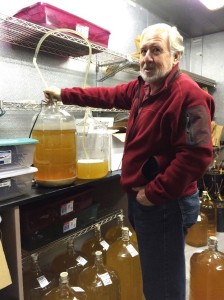 -Combined analysis of NE-1020 variety trials in ND, SD, NE, IA, MI, NY, VT, and CT.
-Combined analysis of NE-1020 variety trials in ND, SD, NE, IA, MI, NY, VT, and CT.*VT report.
*NY report.
–Phenolic compound profiles of cold climate wine grape cultivars.
–Frontenac gris and Brianna berry ripening.
–Pre-fermentation skin contact temperatures and their impact on aroma compounds in white wines made from La Crescent grapes using aroma dilution analysis and simultaneous multidimensional gas chromatography – mass spectrometry – olfactometry.
–Determination of aroma compounds in red wines made from early and late harvest Frontenac and Marquette grapes using aroma dilution analysis and simultaneous multidimensional gas chromatography – mass spectrometry – olfactometry.
Objective 2: Develop and extend research-based vineyard management practices that allow sustained production of high quality fruit from cold climate cultivars.
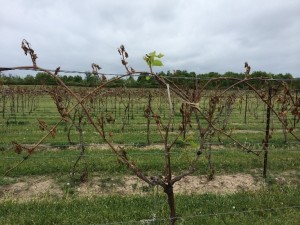 –Effects of spacing, training, and pruning on vine performance and fruit quality of St. Croix.
–Effects of spacing, training, and pruning on vine performance and fruit quality of St. Croix.–Iowa training systems trial.
–Marquette crop load and training system trial for Michigan.
–Marquette, Frontenac, St. Croix, and La Crescent training trial in Nebraska.
–New York Frontenac training trial.
–New York Marquette training trial.
–Recovery from frost injury in New York training systems trials in 2015.
–Impact of shading on Frontenac and Marquette fruit composition.
–Brianna, Frontenac, La Crescent, and Marquette training trials in Wisconsin.
–Frontenac, La Crescent, and Marquette crop load trials in Wisconsin.
–North Dakota research update.
–Grapevine nutrition and juice quality.
–Sensitivity of northern grape cultivars to fungicides and cultivar susceptibility to diseases.
Objective 3: Develop and optimize winemaking practices to sustainably produce and market distinctive, high quality wines from cold climate cultivars.
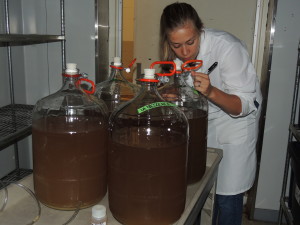 –Yeast selection for cold-hardy wine grapes.
–Yeast selection for cold-hardy wine grapes.–Using malic acid-reducing yeasts for cold climate wine grapes.
-Optimizing deacidification methods for cold climate cultivars.
–Skin contact trial in La Crescent.
–Characterizing anthocyanins in red cold hardy hybrids.
Objective 4: Identify strategies to support sustainable development of businesses based on cold climate cultivars, from the individual winery to regional agri-tourism.
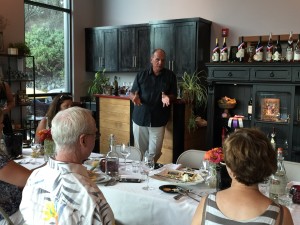 –Upper Midwest winery tasting room visitor study.
–Upper Midwest winery tasting room visitor study.–Impact of different types of information on consumer value of cold hardy wine.
–Cold hardy wine branding.
–Cost of establishment and operation cold-hardy grapes in the Thousand Islands region.
Publications resulting from the Year 1 Baseline Survey:
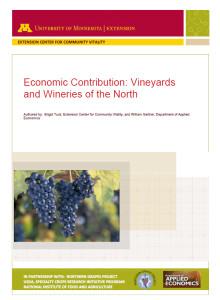
Economic Contribution: Vineyards
and Wineries of the North
Vineyards and Grapes of the North
Vineyards and Wineries in Illinois
Vineyards and Wineries in Iowa
Vineyards and Wineries in Michigan
Vineyards and Wineries in Minnesota
Vineyards and Wineries in the New England States
Vineyards and Wineries in Nebraska
Vineyards and Wineries in New York
Vineyards and Wineries in the Dakotas
Vineyards and Wineries in Wisconsin
The Tasting Room Experience and Winery Customer Satisfaction
Miguel Gomez and Erin Kelly, Dyson School of Applied Economics and Management, Cornell University
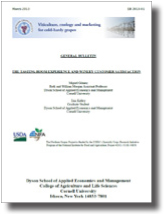 Customer satisfaction is especially important for the cold climate wineries, who rely on tasting room visitors for an important share of total sales. Ensuring that customers have a satisfactory experience can create customer loyalty and positive press as clients recommend the establishment to their friends, colleagues and family. This study of six wineries in New York and Iowa describes the links between customer satisfaction and sales.
Customer satisfaction is especially important for the cold climate wineries, who rely on tasting room visitors for an important share of total sales. Ensuring that customers have a satisfactory experience can create customer loyalty and positive press as clients recommend the establishment to their friends, colleagues and family. This study of six wineries in New York and Iowa describes the links between customer satisfaction and sales.




